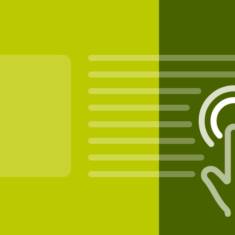How to Read Your Google Analytics
04.21.14
Google throws us for a loop every once in a while. Constant algorithm changes, penalties, ranking updates and keyword hoarding always keeps us on our toes and now, we’ve got a new way to look at analytics. It’s for this reason that we actually worked on putting together a guide to get to #1 on Google search results.
Though these are not dramatic changes, the new analytics verbiage may take some getting use to when it comes out. Here is the update analytics language Google Analytics uses, and how to decipher it for your business.
“Visits” are now called “Sessions” and “Unique Visitors” are now called “Users”
“Sessions” simply means the amount of times your site has been visited, while “Users” accounts for the amount of people who have visited the site (both new and returning).
Pageviews, Pages per Session and Average Session Duration
These stats refer to how many pages have been viewed on your site, how many pages the average visitors looks at, and how long they’re staying on the site.
Goals to set:
- 2 Pages per Session
- 2-3 minutes per Average Session Duration
Bounce Rate
Bounce rates can be intimidating to people. What’s a good number and what does it even mean? Bounce rates refer to the amount of users who have landed on a page and left after viewing only that page. The lower the bounce rate the better. Low bounce rates mean people are landing on a page and finding the information interesting enough to pursue information on other pages.
Goals to set:
- 30% Bounce Rate for most pages on the website
- 50% Bounce Rate for blog posts
Percent of New Sessions
This is a common metric our clients get confused with. Percent of new sessions is the percent of total users who came to the website for the first time. It’s nice to keep fresh eyes on your content because that means you’re expanding your reach. For help on optimizing your Google Analytics reporting, click the button below for SEO help.
Goals to set:
- 70%-80% New Sessions daily
- 70%-80% when running social media/banner ad campaigns
How to utilize this information:
Increasing sessions:
An obvious goal you’d like to set for yourself is to increase the sessions on your site over time. It’s best not to dive in head first; create a plan and set (realistic) metrics that you can report on monthly to show progress.
Increasing pageviews:
You’ve got all this great content, why not share it? Post videos to YouTube, share your links on social networks and community blogs and actively engage influencers who will share your message! This also increases the potential for brand new site visitors!
Increasing pages per session:
Visitors should want to view more pages on your site. In order to increase page views, link to other internal pages that provide information pertaining to the content at hand. The more time they spend on your site, the better – so keep users traveling on a journey through your site.
Increasing average session duration:
In order to increase the duration per session you must ensure your content is pertinent to your page titles. Make sure your content is close to 300 words per page and contains information that makes visitors want to read and learn more.
Decreasing bounce rate:
Is your bounce rate high? This could mean people are coming to your page on accident. Is the description you provide in search engines accurate? Is the content on your page compelling, educational and unique to your business? Maybe a majority of your users are viewing your site on mobile devices and it needs to be responsive. High bounce rates can come from any number of reasons.
Search Engine Optimization (SEO) doesn’t have to be a challenge, you just need to make sure you’ve got all your ducks in a row before you dive in! Need help maximizing your SEO?


